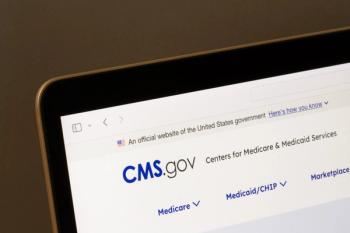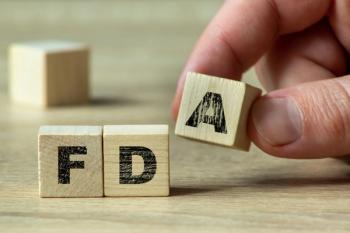
Cerner launches smarter med dispensing system
Cerner Corp.'s CareAware RxStation characterizes the nextgeneration of automated medication dispensing systems. Itintegrates electronic medical records with dispensing cabinets. "Itis a closed-loop system," said Dawn Iddings, director of resourceplanning for the company's device innovation group. "It's anend-to-end solution, fully integrating ordering, dispensing, andadministration at bedside, through a completely sealed device."
Cerner Corp.'s CareAware RxStation characterizes the next generation of automated medication dispensing systems. It integrates electronic medical records with dispensing cabinets. "It is a closed-loop system," said Dawn Iddings, director of resource planning for the company's device innovation group. "It's an end-to-end solution, fully integrating ordering, dispensing, and administration at bedside, through a completely sealed device."
Cerner is a leading supplier of healthcare information technology, selling more than $1 billion worth of its products and services in 2005. Last February at a trade show in San Diego, the company moved in a new direction: It unveiled the RxStation in hopes of becoming a player in the multibillion-dollar drug dispensing industry now dominated by Cardinal Health, McKesson Corp., and Omnicell Inc.
The CareAware RxStation units are only now coming on the market, so hospitals are still waiting to hear about the experience of early adopters. The first purchaser of the units is the Sun Health Corp., a multihospital health system in Sun City, Ariz. Installation is scheduled for this summer.
"The response has been very positive among pharmacists when they see this system's ability for single formulary maintenance, providing visibility from ordering to administration," said Ranee Neely, Pharm.D., Cerner's senior solution designer on the RxStation project. "It represents an improved degree of transparency."
The "single formulary" concept-as opposed to reconciling a medication order's formulary compliance twice, at dispensing and administration-is a significant step forward in efficiency, said Iddings. It is possible because the RxStation builds on the company's Millennium software, connecting information from a patient's medical history directly with clinicians and the pharmacy. By integrating this software into the dispensing machinery, nurses have the opportunity "to see on the device itself the current status and location of any medication order," she said.
Neely added that pharmacists are also attracted to the product's ability to generate a single, computer-generated reconciliation report, comparing ordering, dispensing, and administration histories. This offers both enhanced control of inventory and dispensing data, as well as an increased degree of efficiency, "because so much of this, including careful tracking of narcotics for possible diversion, has had to be done manually," she said.
In addition, the RxStation uses radio frequency identification (RFID) in the dispensing cabinets. As part of the replenishment process, a pharmacy technician loads a medication into a bin and correlates the medication to a unique RFID tag. The tag is then used to track the location of the medication and also by the automated dispensing device to manage the restocking and removal process. "Each RFID tag within the device is associated with a specific medication," said Iddings. The RFID technology decreases the chance of loading and selecting the wrong medication and increases visibility and control. "Therefore, there is significantly less worry that nurses are removing meds from the wrong pocket or drawer," she said.
Newsletter
Pharmacy practice is always changing. Stay ahead of the curve with the Drug Topics newsletter and get the latest drug information, industry trends, and patient care tips.





















































































































































